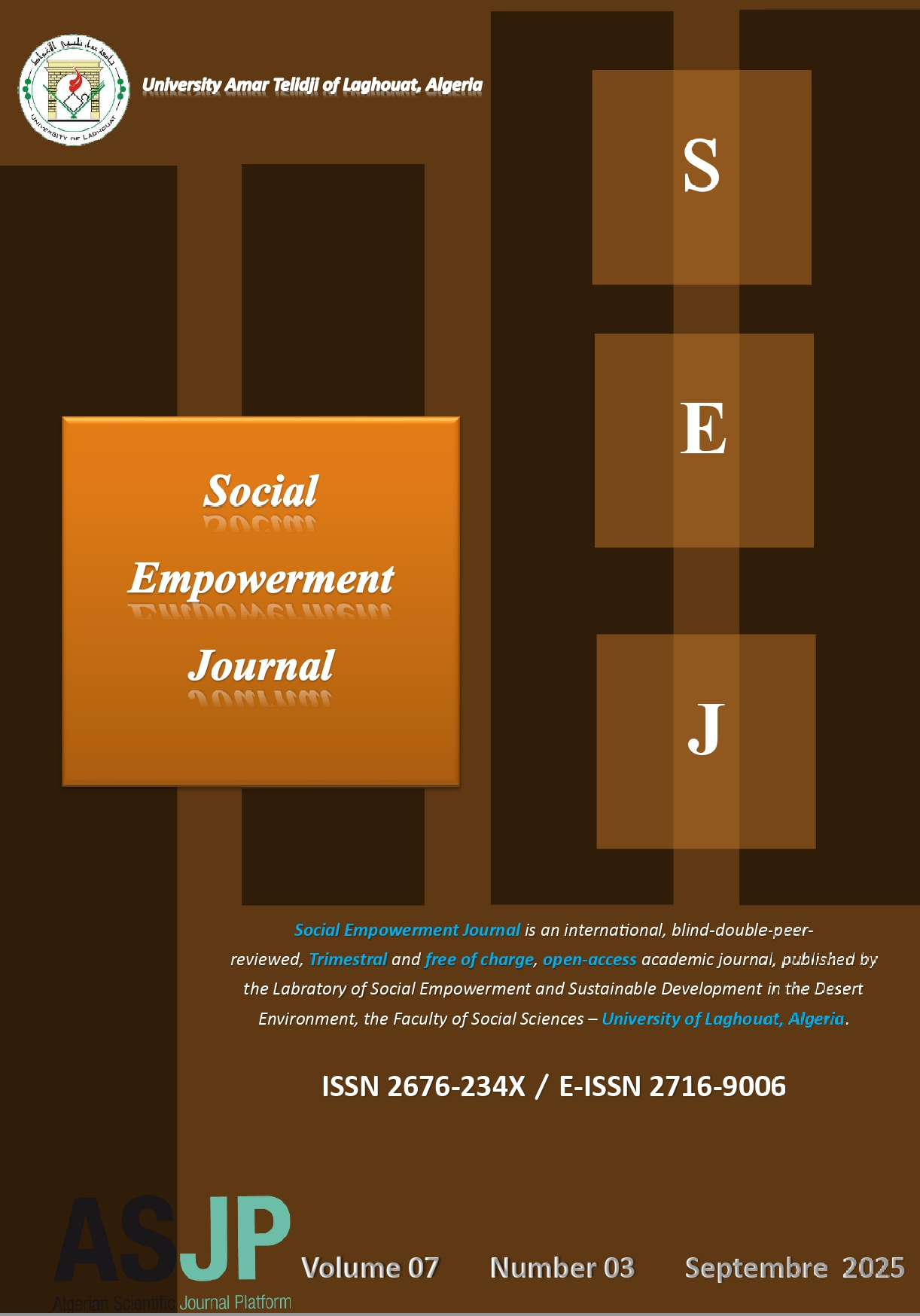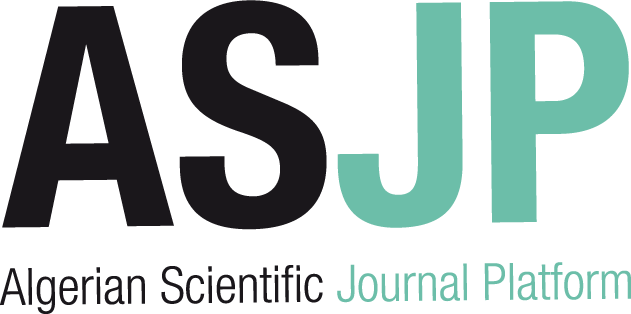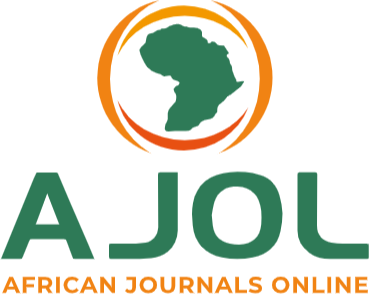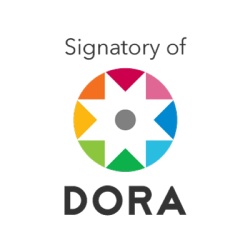Moderating effect of Institutions on Financial Sector Development and Economic Growth Nexus in Nigeria.
Abstract
This study examines the nexus between financial sector development and economic growth with institutions as a moderating variable. The study uses quarterly data from 2010q1 to 2022q4 to evaluate the long run relationship between the financial sector and economic growth using the methodology of autoregressive distributed lag models, the bounds test for cointegration with structural breaks. The study finds that institutions moderate the relationship between financial sector development and economic growth in Nigeria with the coefficients of institution having a statistically significant positive relationship with the economic growth. The study therefore finds that with good institutions such as good governance quality and control of corruptions the effect of financial sector development on economic growth could be felt on the economy. The study therefore recommends that the government should strengthen its institutions such as ensuring governance quality by making those in control of governance to be accountable and control corruption in the country by ensuring that all those found guilty of the offense are punished according to the laws of the land.
Downloads
References
Akintola A. A. Oji O.I & Itodo, I.A. (2020). Financial sector development and economic growth in Nigeria. Central bank of Nigeria (CBN) economic and financial review, 58(3), 59-84
Akpan, G.E., & Chukwu, C. (2014). Natural resources, human capital and economic development in Nigeria. Tracing the linkages. Journal of Economics and sustainableDevelopment, 5(20), 44-50.
Al Yousif, Y.K. (2002). Financial development and economic growth. Another look at evidence from developing countries. Review of Financial Economics, 11(2), 131-150.
Alexious C, Vogiazas S. & Nellis JG. (2018). Reassessing the relationship between the financial sector and economic growth. International journal of finance and economic. 23(2),155-173
Ayode. A.A. (2020). Nexus between financial sector and sustainable development in Nigeria. Acta universitatis danbus. 16(4), 234-250
Bai, J., & Perron, P. (2003). Computation and analysis of multiple structural change models Journal of Applied Economics, 18(1), 1-22.
Commander, S., & Nikoloski, Z. (2011). Institutions and economic performance: What can be explained? Review of Economics and Institutions, 2(2), 1-35.
Ehigiamusoe, K.U., & Lean, H.H. (2018b). Finance-growth nexus. New insights from West African Region. Emerging Markets Finance and Trade, 54(11), 2596-2616.
Elijah. O. A & Yetunde A. (2024). Financial sector development and economic growth in
Nigeria. Journal inouasi economic, 9(1), 25-32
Garba T., M.U. Bello, Abdullahi, H. & Abubakar, M.Y. (2016). Institutions, Naturalresources and economic growth in Nigeria. Central bank of Nigeria (CBN). Economic and financial review, 54(4), 1-28
Gregory, A.W., & Hansen, B.E. (1996a). Residual based tests for models with structural shifts, Journal of Econometrics, 70(1), 99-126.
Gregory, A.W., & Hansen, B.E. (1996b).Tests for cointegration for models with regime shifts and trends. Oxford Bulletin of Economics and statistics. 58(3), 555-560.
Hussein, M. (2023). Institutional quality and economic growth in sub-Saharan Africa: A panel data analysis. Journal of Economics and Development, 25(4), 332-348.
Kar M. Nazlioglus. S & Agir H. (2011). Financial development and economic growth in MENA countries. Economic modeling.28 (1), 685-693
Khalid M. A. & Al-Rjoub.S (2006). Financial development and economic growth. Newempirical evidence from the MENA countries. Applied econometrics and international development.6(3), 138-150
Kojo. M. Nazlioglus. S & Rufael Y.W. (2014). Financial development, trade openness and economic growth in African countries. Economic modeling.37 (2), 386-394
Mckinon, R.I. (1973). Money and Capital in Economic Development, Brookings Institutions. Washington D.C.
Narayan, P.K & Smyth, R. (2008). Energy consumption and real GDP in G7 countries: Evidence from panel cointegration with structural breaks. Energy Economics, 30(5), 2331-2341.
North, D.C. (1990). Institutions, Institutional change and economics performance.Cambridge: Cambridge University Press.
Odedokun M.O. (1996). Alternative econometric approach for analyzing the role of the
financial sector on economic growth: Time-series evidence from LDCs. Journal of development economics. 50 (1), 119-146
Odeniran. O.S & Erias A.U.(2010). Financial sector development and economic growth in Nigeria. Central bank of Nigeria (CBN) economic and financial review, 43(3), 91-124
Okoh, A.S., & Ebi, B.O. (2013). Infrastructural investment, Institutional quality and economic growth in Nigeria: An interactive approach. European Journal of Humanities and Social Sciences, 26(1), 1343-1358.
Olaniyi, C.O., & Adeniji, S.I. (2021). Moderating effects of institutional quality on the finance- growth nexus. Insights from West African Countries. Economic Change and Restructuring. 54(1), 43-74.
Olarinde, M.O,& Omojulabi, J. A. (2014). Electricity consumption, institutions and economic growth in Nigeria. What evidence say so far? Journal of Economics and sustainable Development. 5(12), 40-55.
Pannahi, H., Assadeh, A., & Reffaei, R. (2014). Economic freedom and economic growth in MENA countries. Asian Economic and Financial Review, 4(1), 105-116.
Puatwie, J T. & Mandiefe S. (2017). Financial sector development and economic growth: Evidence from Cameron. Financial Innovation,3(25),1-25
Pesaran, M. H., & Shin, Y., & Smith, R. J. (2001). Bound testing approaches to the analysis of level relationships. Journal of Applied Econometrics, 16(3), 289-326.
Phillips P.C. B. & Peron, P. (1988). Testing for unit roots in time series regression. Biometrica, 75(2), 335-346.
Phillopot, L.M. (2010). Natural Resources and Economic development in the Transition Economies. Working paper: Clammonte-Ferrand, PRES-de Clammonte universite.
Samuel S.W. (2018). The impact of financial inclusion on economic growth in Nigeria. International journal of innovation and research in educational sciences. 5(2),2349-5219.
Wallack, J.S. (2003). Structural breaks in Indian macroeconomic data. Economic and political weekly, 38(41), 4312-4315.
Wasurum, E, Amini,M.C., & Leerah, K.(2021). Institutions and economic growth in Nigeria. Social Sciences Review, 1(2), 2795- 3015.
Yua, H. Uju F.A. Okaro. S.C & Stanley K.O. (2020). Causal relationship between financial structure and economic growth in contemporary African Economy: A case study of Nigeria. European journal of Accounting, auditing and finance research.8 (3), 59-68.
Zhuang J. Gunatilake H.Niimi Y. & Huang B. (2009). Financial sector development, economic growth and poverty reduction. ADB Economic working paper, series no 173.

This work is licensed under a Creative Commons Attribution-NonCommercial 4.0 International License.




















